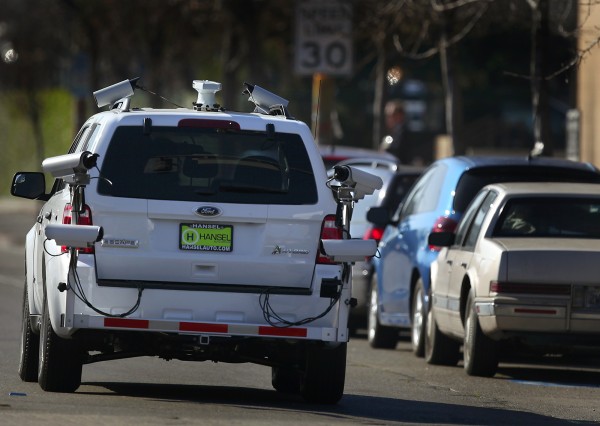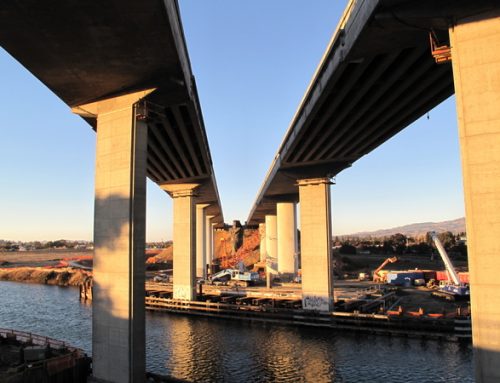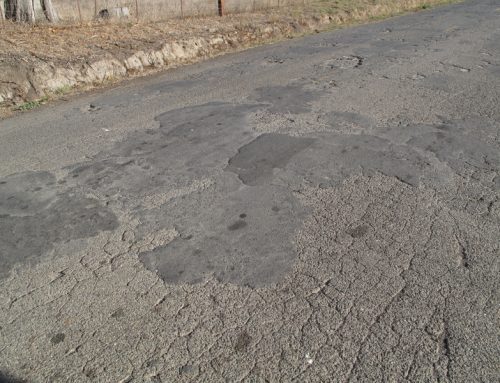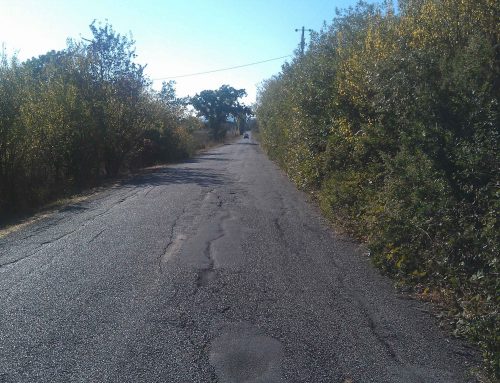Questions from Road Warrior readers:

Santa Rosa's super-equipped SUV, used to look for parking violators, on a practice run about two years ago before it was put into service. Press Democrat photo by Kent Porter
Santa Rosa’s parking surveillance SUV
What is that police car that drivers around and has all the cameras and surveillance equipment on it and has Parking Enforcement on its sides. Are we supposed to believe that vehicle patrols parking spaces? Just curious. Kurt
You’re referring to the white Ford Escape hybrid that Santa Rosa started using about two years ago to look for parking violators. It cost $64,957 and is equipped with four cameras, two laser shooters and a GPS device connected to an onboard computer, and all this allows the parking enforcement officer to cruise down streets as the system scans parked cars.
A Press Democrat story on the SUV’s debut reported that the roof-mounted lasers measure each car that it passes as the cameras photograph each one and its license plate. That data along with the time taken are stored in the computer until the SUV comes down the same street. The computer compares the old photos with the ones its taking on the second pass, and when it comes across a car that’s been there too long, a pinging sound signals the officer who issues a parking ticket after verifying the license plate and vehicle matches the photo.
Kim Nadeau, parking programs coordinator for the city, said the AutoChalk SUV is used mostly to enforce residential parking zones, including those around SRJC, downtown, Burbank Gardens, Sonoma County Fairgrounds and Santa Rosa Memorial Hospital.
“We have seen a trend in fewer citations issued in those areas with the use of the AutoChalk vehicle,” she says. “We attribute that to the greater visibility of the AutoChalk SUV, which has increased awareness and understanding of the parkers and resulted in increased compliance with the residential permit parking zone time limit restrictions.”
She says the SUV also reduces the chance of repetitive injury, which is a risk when officers manually chalk tires, and “enables one officer to cover a larger area and allows staff to be deployed more efficiently.”
At the end of the day, only the photos and data of violators are kept, Nadeau says. The others are purged.
Travel times correct?
Can you look into why on the new Highway 101 information sign in Novato (where the new carpool lane starts southbound) the time displayed never changes? In the morning, the sign states 12 minutes to Highway 580 in San Rafael, but even in the carpool lane it takes almost 20. When I’m not carpooling, it shows 12 minutes but is usually 40 minutes. Even when there is an accident it shows 12 minutes. Thanks. Deric
The answer comes from Janet Banner, 511 project manager for the Metropolitan Transportation Commission, which provides the driving times listed on the Caltrans’ info sign. She says her agency’s operations staff reviewed the Novato sign’s times for four days last week after I notified her of the concern and everything was working properly. In fact, she says the sign one day showed a driving time of 20 minutes with heavy to moderate congestion, “which is what I would expect to see when all the systems are operating correctly.”
She says the sign on southbound 101, just north of Highway 37, actually has been in place for many years.
Banner says the times on the signs “are the average speed, on a minute-by-minute basis, of all the lanes, including the carpool or high-occupancy vehicle lanes, when the 511 system is using data from radar detectors and ETC (electronic toll collector) readers. However, in some locations 511 is using data from Caltrans in-pavement detectors, and in those locations the vehicles’ speeds from the carpool lanes are not included.”
She says that what might be happening to our reader is that he “is passing by the sign just as congestion starts to build, thus it does take him 20 minutes to drive the route, but when he drove by the sign, the last vehicle to complete the route took 12 minutes. There is an inherent lag in the data coming from the ETC readers, which is the primary data source for this route.”
Those ETC readers, separate from those used at Bay Area bridges, track signals from FasTrak devices in cars to help compute the travel times. But Banner says drivers’ privacy is protected because the 511 system’s ETC readers scramble the FasTrak ID number to prevent identification and no related database is kept.
For more information at the 511 website, CLICK HERE.
————-
Follow the Road Warrior on Twitter via @PDRoadWarrior



